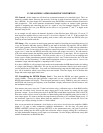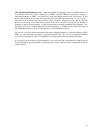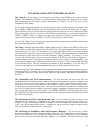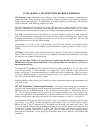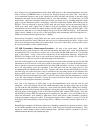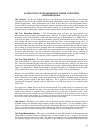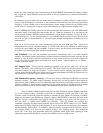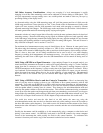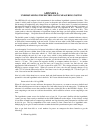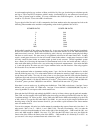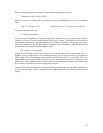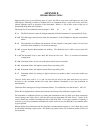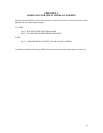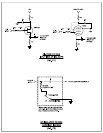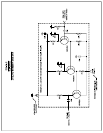33
When working with voltage the formula is a little different from the power formula:
Voltage ratio in dbv = 20 log (V/VR)
Where V = the level in volts and VR is the reference in volts. Our HP3586 uses .775 volts as a reference
where:
dbV.775 = 20 log (V/.775) Where VR is now .775 volts and V is still in volts.
To convert from db to find V use:
V = VR anti log (dbv/20)
As you can see by comparing the voltage with the power formulas, they are the same except the power
constant of 10 is now 20 for the voltage formula, which is twice as large. The constant is twice as large for
volts because voltage across a constant impedance, say 50 ohms, will increase as the square of the power.
What’s nice about this is we can work with level readings in db’s referenced to watts and knowing the
resistance the power is going into then compute volts by:
For voltage V = (P squared)R
Voltage is a little harder than power to estimate in our head because of the constant being 20 in it’s
formula. If you’re smarter than me, for converting +db linear value in volts you can do it by squaring the
MSD’s linear value and multiplying by the square of the LSD linear value. For converting –db to volts
take the MSD’s linear number, which will be less than one, and square it, then divide by the square of the
LSD’s value. That’s too hard for me to do in my head so I just work with converting to power ratios from
db’s or use my trusty HP25 to get linear voltage ratios from db’s.
I hope this discussion has helped you in understand how to work with db’s and not further confused you.
For more on this subject, consult a math book or the ARRL Handbook for a further discussion of this
subject.



